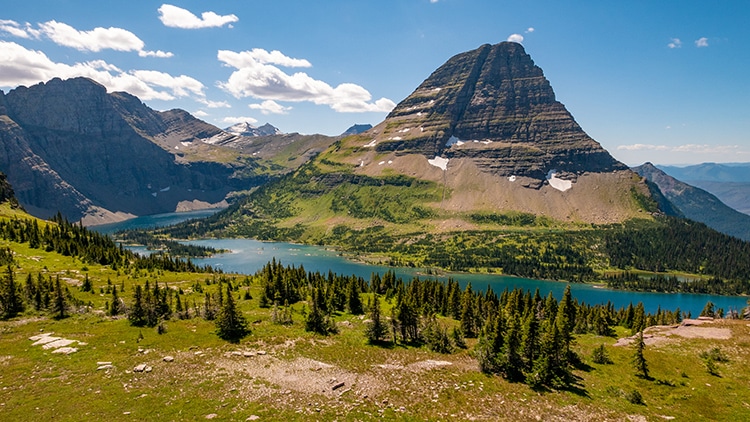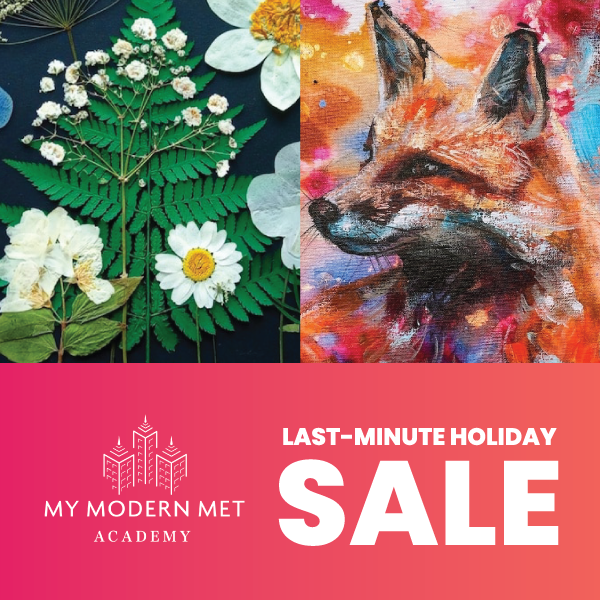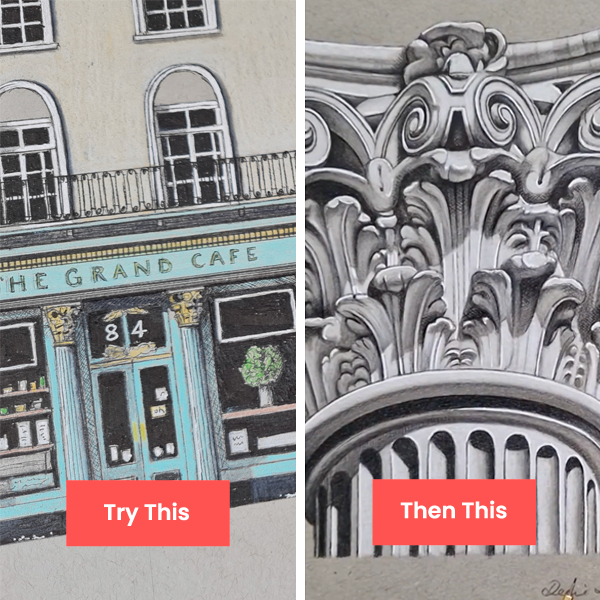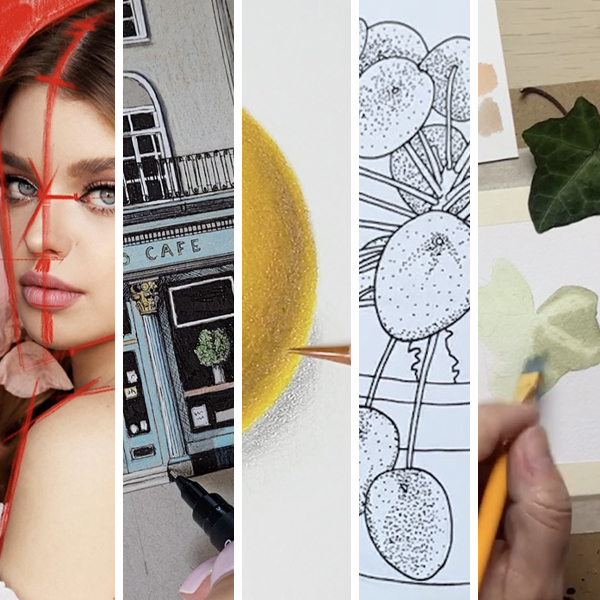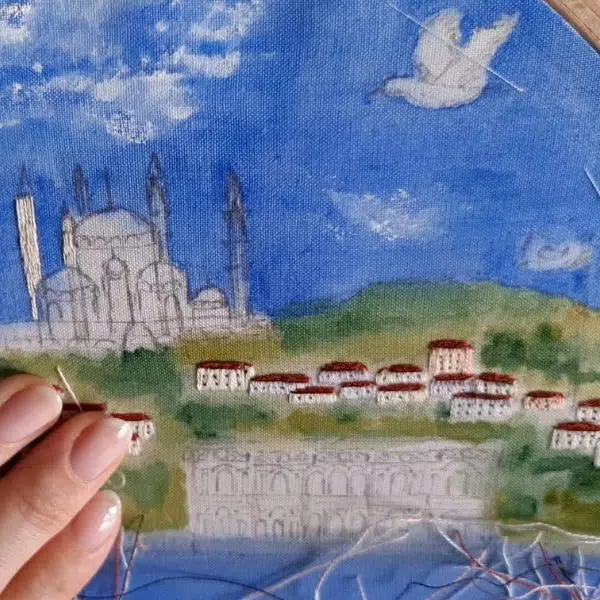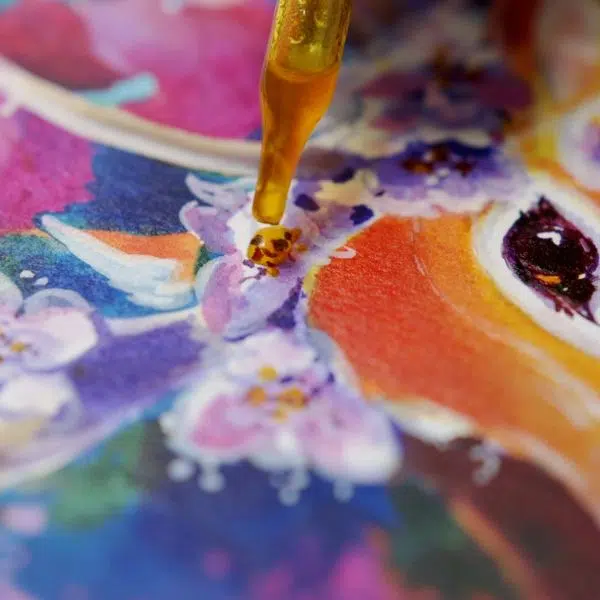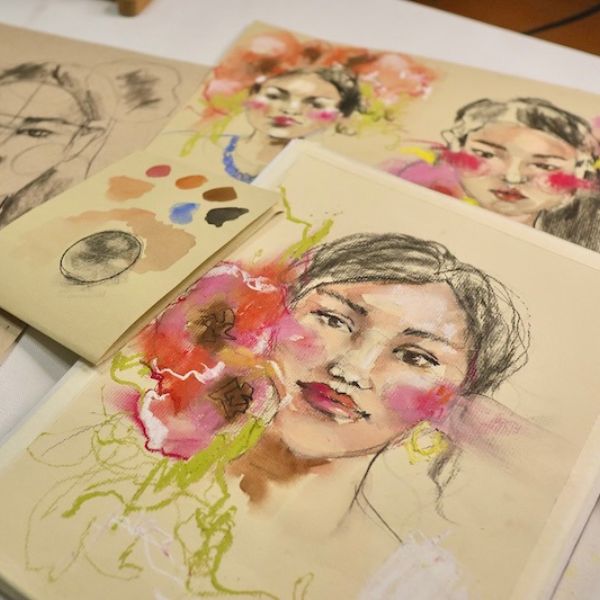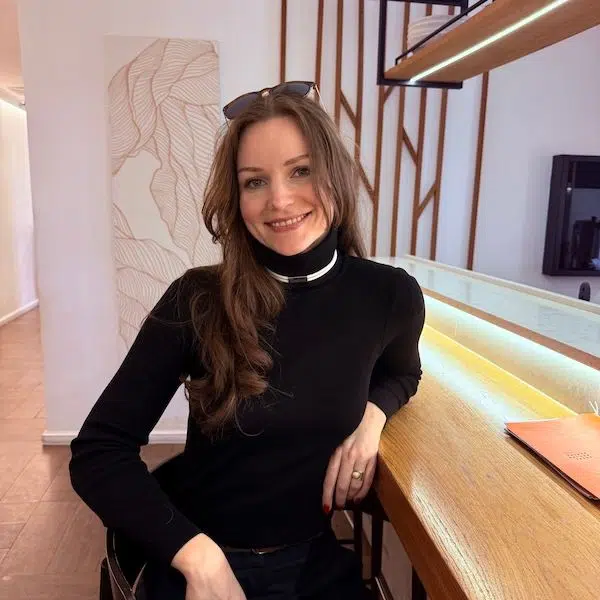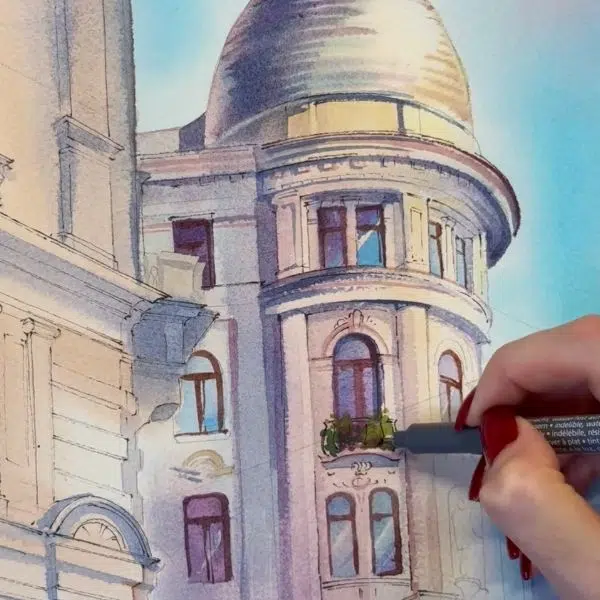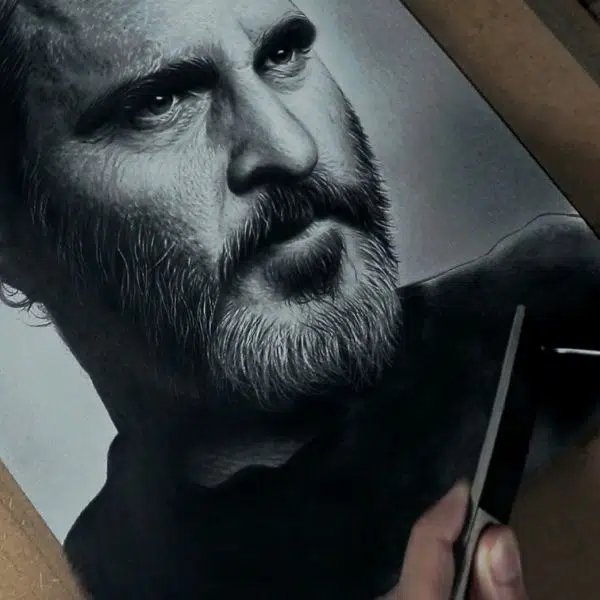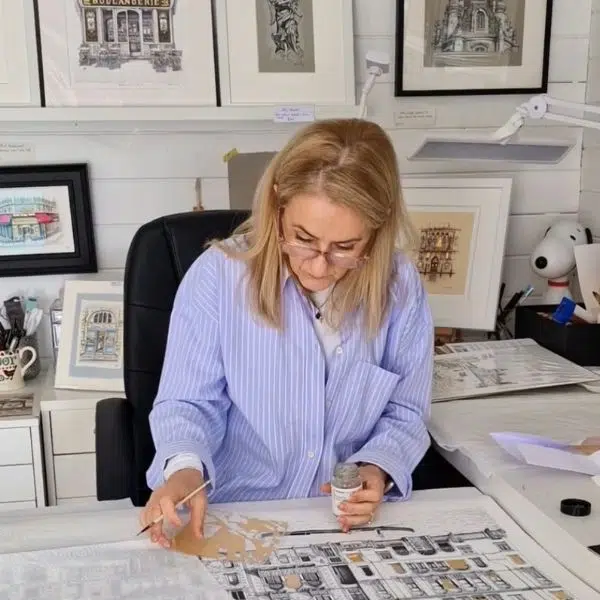
Nature is undeniably inspiring to countless artists. Maybe you too want to capture a landscape that you associate with happy memories or aspire to visit someday. If so, artist Elyse Dodge is the perfect teacher to get you started with her My Modern Met Academy class, Acrylic Landscapes: Reimagining Mountains as Polygons. Dodge is known for her contemporary take on landscapes, and will share the entire process for how she composes a work.
One of the first major steps is picking out a scene to paint. Between your own photos, social media, and Google image search, you might be struggling to pick the perfect reference image.
Scroll down for three helpful tips to get started.
Here are three tips to help get you started painting geometric landscapes like artist Elyse Dodge.
1. Make sure the reference photo you select has layers.
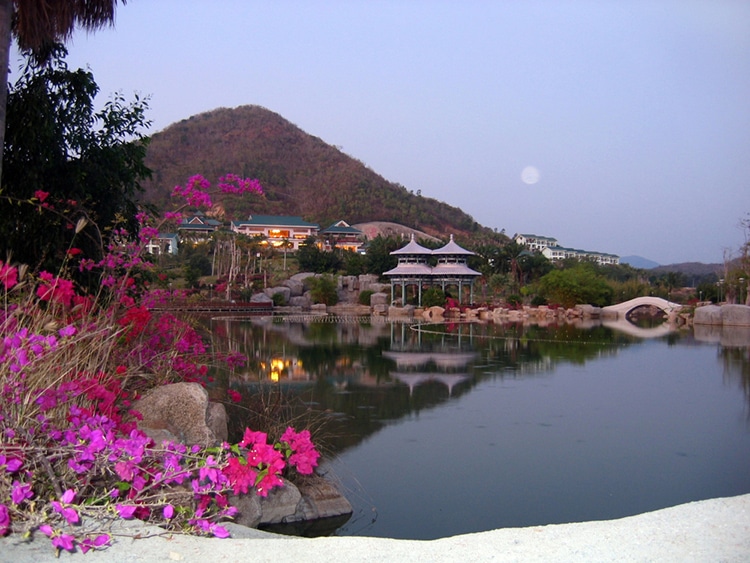
Photo: ENSIFERUM/Depositphotos
Having something in the foreground such as flowers draws a viewer in and makes the painting feel more immersive. Typically, the main subject of a landscape painting is either in the middle ground or background. Having mountains be the focus in the background pulls the eye in and creates a sense of depth. This depth is not only more interesting to the eye, but helps communicate how awe-inspiring a scene is. As a painter, having clear layers also helps you break down the image so that you don't feel intimidated by the emptiness of a new canvas.
2. Look for discernible polygonal shapes.

Photo: AIISHA/Depositphotos
If you want to paint like Dodge does, you need to be able to break some of you features into smaller polygons. That's a lot easier when you already have bigger ones naturally in the scene. In the above photograph, the mountains and even the trees have outlines that are triangular. This makes for a more effortless process translating the reference to your painting on your canvas.
3. Find a photo with a range of values, light to dark.
Be sure to find a reference that has a good range of values, from light to dark. Contrast makes the picture more dynamic and is more fun to play with as you come up with a range of tones for your polygons. Value differences make a painting more lively by suggesting luminosity.
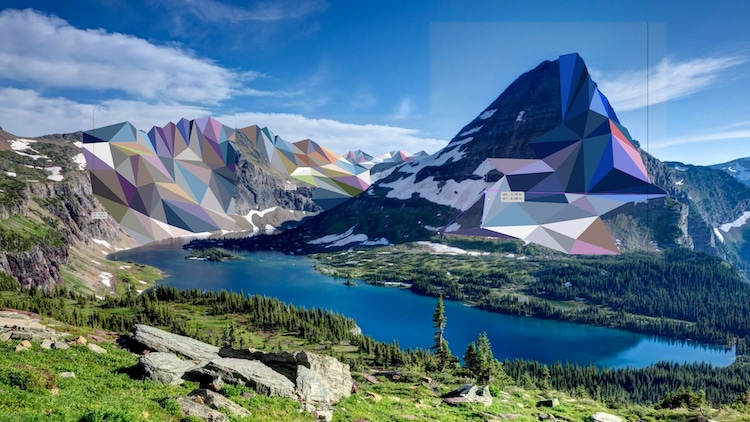

Ready to dive into this type of art? Sign up for Elyse Dodge's Acrylic Landscapes class to get her expert tips and be guided into painting a beautiful landscape.
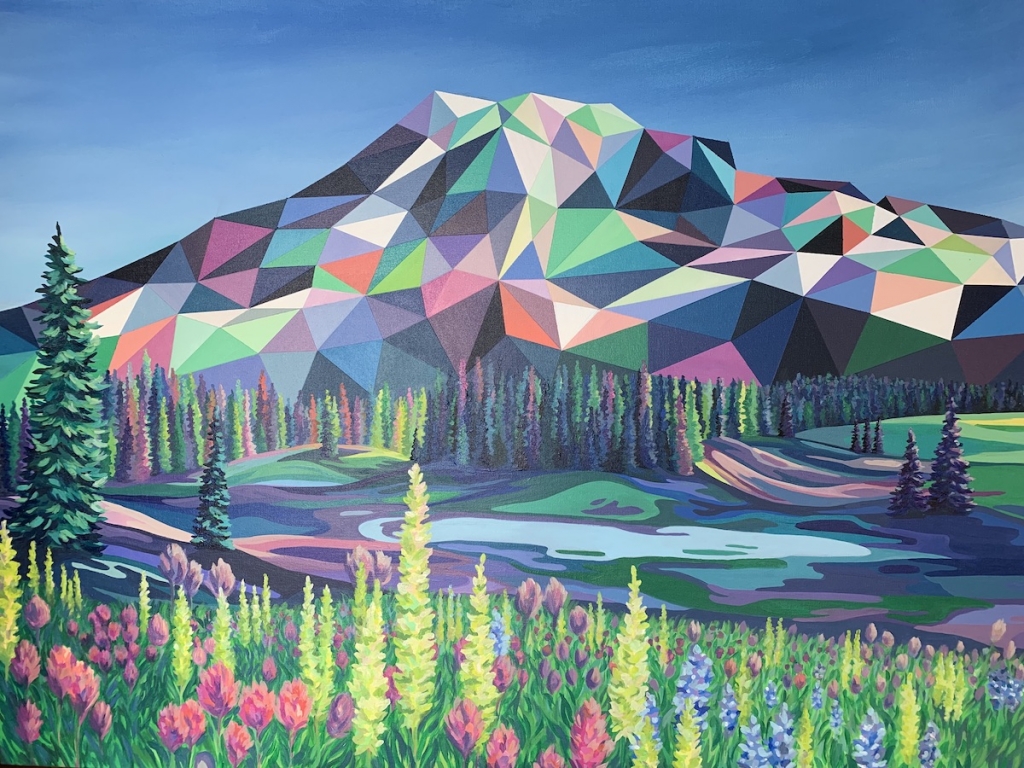
Get a peek into the course below.
Related Articles:
Broaden Your Creative Skills and Save Big With Our Abstract Painting Bundle
Get Inspired by Talented Artists Who Teach at My Modern Met Academy
This Online Class Lets You Dive Into the Creative Possibilities of Mixed-Media Art
Learn To Let Your Paint Brush Flow in This Freeing Abstract Floral Art Class
